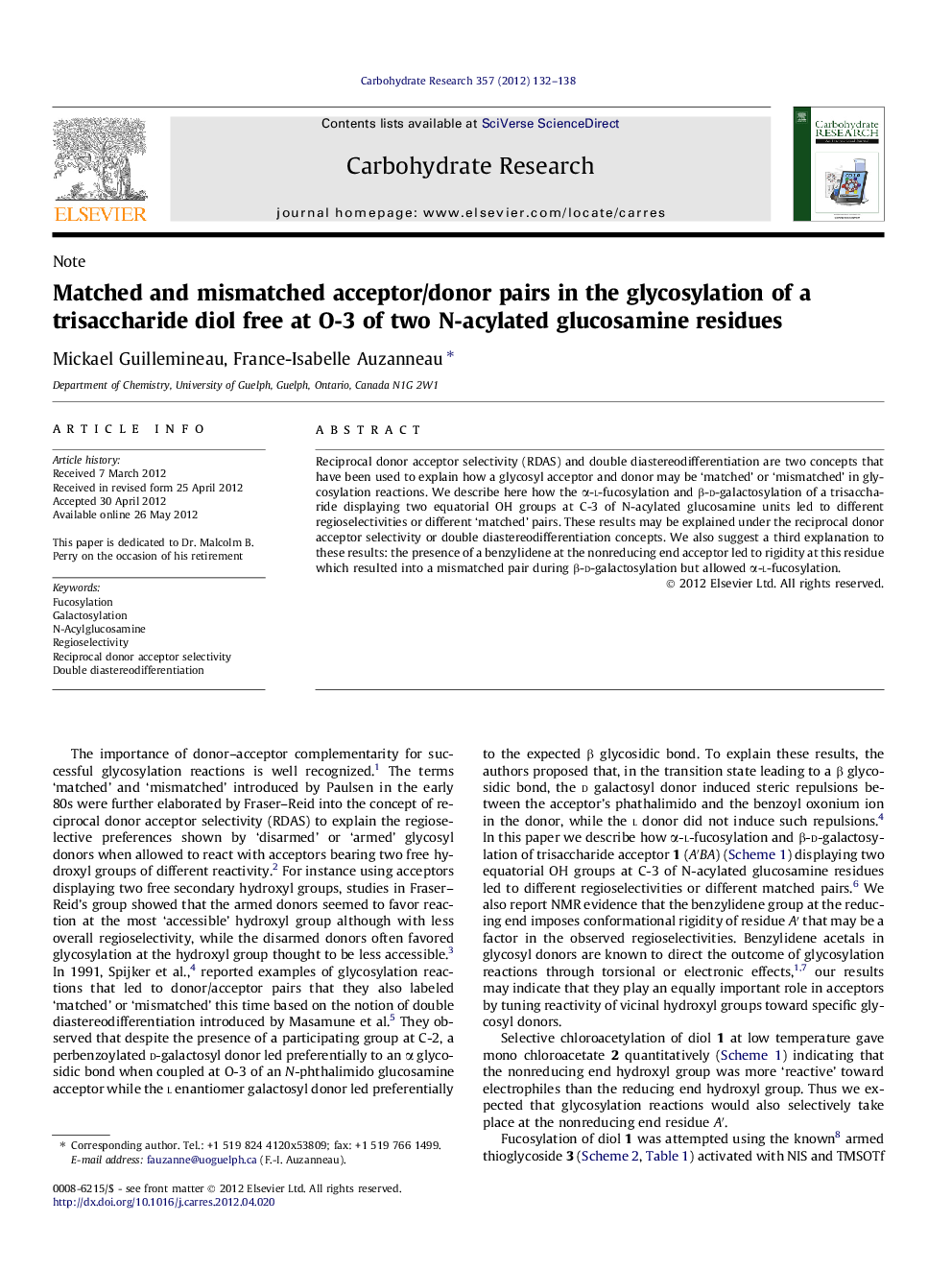| Article ID | Journal | Published Year | Pages | File Type |
|---|---|---|---|---|
| 1390370 | Carbohydrate Research | 2012 | 7 Pages |
Reciprocal donor acceptor selectivity (RDAS) and double diastereodifferentiation are two concepts that have been used to explain how a glycosyl acceptor and donor may be ‘matched’ or ‘mismatched’ in glycosylation reactions. We describe here how the α-l-fucosylation and β-d-galactosylation of a trisaccharide displaying two equatorial OH groups at C-3 of N-acylated glucosamine units led to different regioselectivities or different ‘matched’ pairs. These results may be explained under the reciprocal donor acceptor selectivity or double diastereodifferentiation concepts. We also suggest a third explanation to these results: the presence of a benzylidene at the nonreducing end acceptor led to rigidity at this residue which resulted into a mismatched pair during β-d-galactosylation but allowed α-l-fucosylation.
Graphical abstractThe α-l-fucosylation and β-d-galactosylation of a trisaccharide displaying two equatorial OH groups at C-3 of N-acylated glucosamine units led to different ‘matched’ pairs.Figure optionsDownload full-size imageDownload as PowerPoint slide
